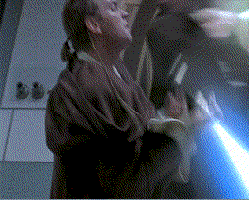LAB #5 – Measurement: Mass, Volume, and the Exploration of
Density
Introduction
Volume
is the amount of space occupied by matter - solid, liquid, or gas.
Volume is measured in
units: cm3 for a solid, mL for a liquid.
Problem
-
A:
How can we find the volume of a rectangular block?
-
B:
How can we find the volume of an irregularly
shaped object?
Hypothesis:
-
Materials
-
Various
sized blocks, irregular shaped objects, ruler, graduated cylinder
Procedure A
1) Use a metric ruler to measure the
dimensions of your rectangular objects; measure to the nearest tenth (0.1) cm.
2) Calculate the volume in cm3
of your rectangular object by multiplying the length (cm) times the width (cm)
times the height (cm). V = L x W x H
3) Record your measurements in the data
table.
Results
A
Data
Table: Volume of rectangular objects
Object
|
length (cm)
|
width (cm)
|
height (cm)
|
Volume (cm3)
|
A
|
|
|
|
|
B
|
|
|
|
|
C
|
|
|
|
|
D
|
|
|
|
|
|
|
|
|
|
E
|
|
|
|
|
V
= L x W x H
cm3 = (cm)(cm)(cm)
Procedure B
Use a graduated cylinder to
measure the volume of an irregular shaped solid.
1.
Fill the graduated cylinder to 50 mL and record this into your notebook. This is your initial volume.
2.
Carefully drop the object in on an angle.
The object will displace water (push water up to make way for the
object) which will rise to make a new
volume.
3.
Subtract your initial volume from the new water level.
Results
B
Final Volume --------------à
_____mL
- Initial Volume ------------à
_____mL
=Volume of irregularly shaped
object: _____mL
Analysis B
1)
What
is the maximum volume you can measure with this graduated cylinder?
2)
What
is the smallest volume you can measure with this graduated cylinder?
3)
Determine the value of the minor grids on the
cylinder. i.e. how many mL does each
line equal?
4) Now, check to see if you’ve measured correctly using the Volume of
a sphere equation:
Volume
of sphere using equation:_____cm3
Procedure C
The mass of an object is a measure of the
number of atoms in it. The basic unit of measurement for mass is the gram (g).
You are
going to calculate the densities of
the wood blocks using the equation, Density
= Mass/Volume. You already have the volume of wood blocks A, B, C, D, and E
in the data table for Results A. You
will use a triple beam balance to
find the mass of each block, and then
use the equation to find their volumes. As always, make sure to include the proper
units and round to the nearest tenth.
Results
C
Density
= Mass/Volume
Object
|
Mass
(g)
|
Volume
(cm3)
|
Density
( g/cm3 )
|
A
|
|
|
|
B
|
|
|
|
C
|
|
|
|
D
|
|
|
|
E
|
|
|
|
Units:
Mass = grams = g
Volume
= cubic cm = cm3
Density
= ___ hint: D=M/V
Analysis
C
1) Calculate: Combine the
densities of blocks A, B, C, D and E to find the average density for the
wood. Show your work.
2) What is the maximum mass
the triple beam balance can measure?
3) What is the minimum mass
the triple beam balance can measure?
4) What are the units for
the triple beam balance?
5) Why is it called a triple beam balance? What does each
beam measure; think in numerical terms.
6) Why is it necessary to zero your triple beam balance before using
it?
Analysis B
1) What is
the maximum volume you can measure with this graduated cylinder?
2) What is
the smallest volume you can measure with this graduated cylinder?
3) Determine
the value of the minor grids on the cylinder. i.e. How many mL does each
line equal?
4) Now, check to see if you’ve measured correctly using the Volume of
a sphere equation:
5) How can
you use a graduated cylinder to measure the volume of a liquid?
6) What
happens to the volume of the liquid when you drop an object into the graduated
cylinder? How can we use this to help us find the volume of the object?
7) If an
object dropped into the graduated cylinder pushes up the water mark from an
initial volume of 25 ml to a final volume of 51.5 ml, how many cm3 is the object?
8) Compare
the two different methods of obtaining volume of a marble, how did you
do? How far off were your calculations?
9) Go back
to Lab #2 – Crazy Coasters
Mass of glass marble: _____
Volume of glass marble: _____
Density of glass marble: _____
Predict: Would you expect the glass marble to sink or float
based on its density? Why?
10) Marble (glass), Wood blocks (wood), Water (liquid H2O):
List them in order from least dense to most dense; use data from this lab to
support this.
**Round each answer to the nearest tenth**
++Include units++
Conclusion
What
was your problem?
|
Restate
your hypothesis. Was it right? wrong? why or why not?
|
What
did you learn in this lab?
|
What
did you like about this lab?
|
What
were some challenges you had to deal with?
|
What
could you do next with this problem? What other tests could you
perform?
|
Write
down any other additional thoughts, observations, inferences, etc.
|


















